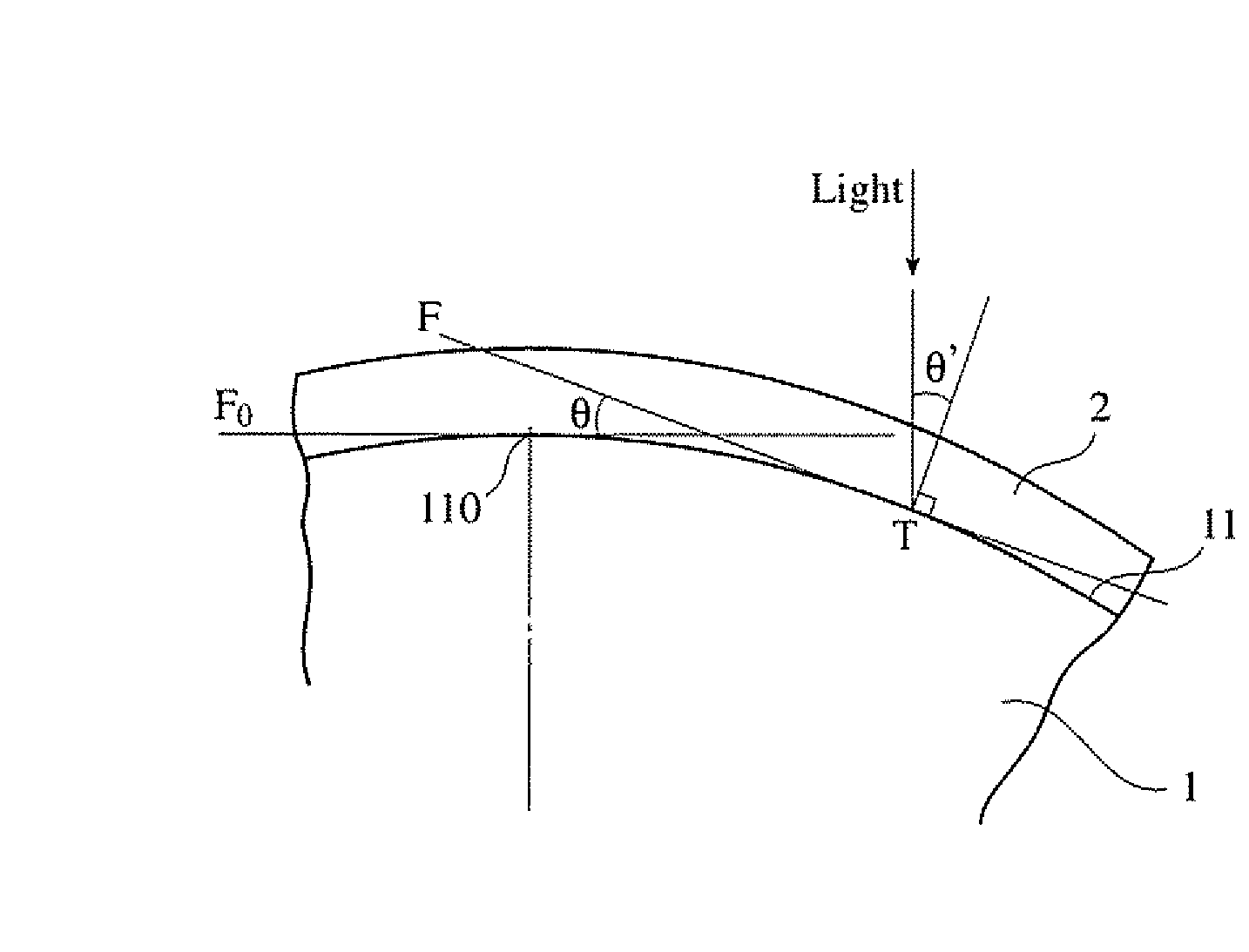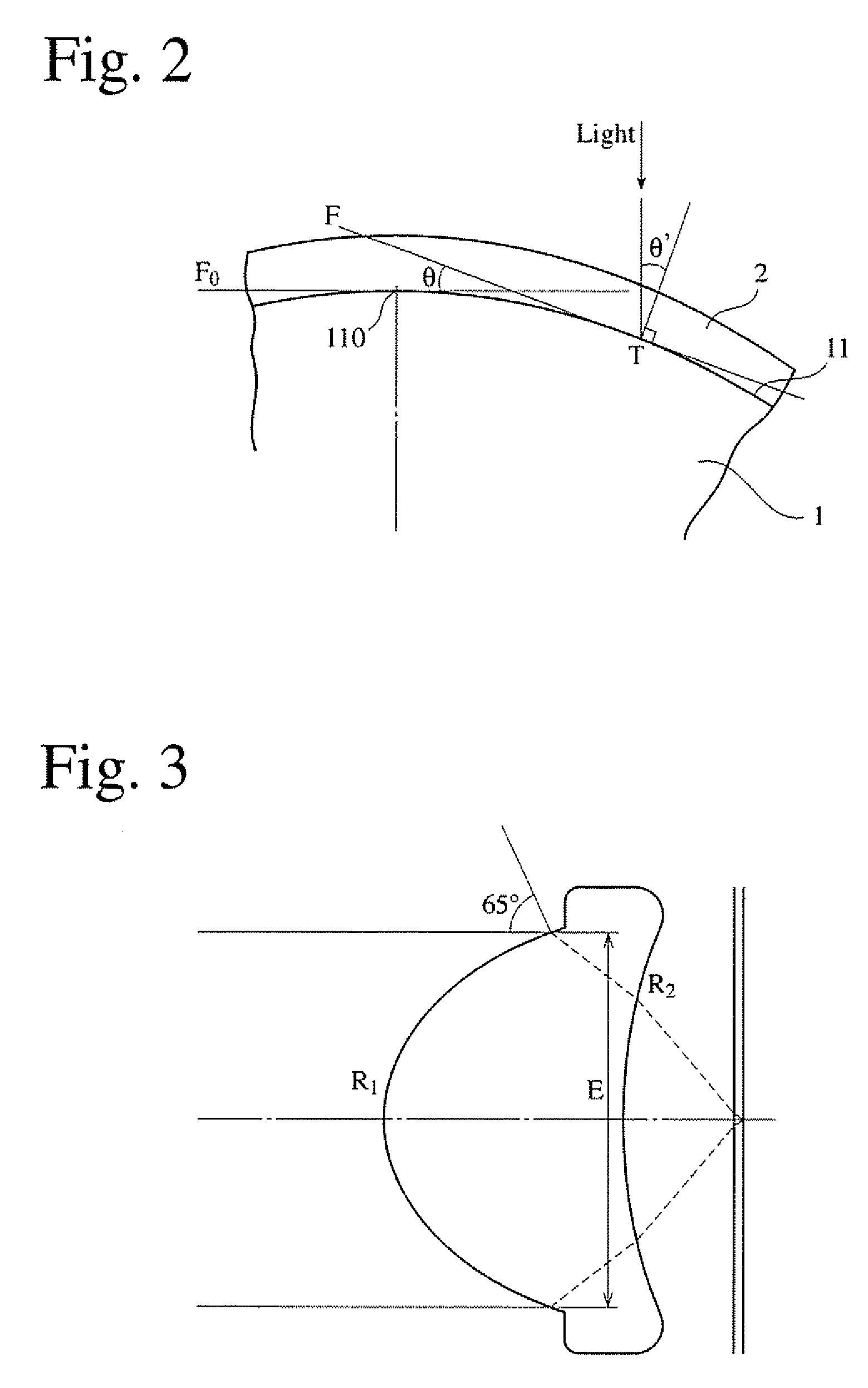Optical element having Anti-reflection coating
an optical element and anti-reflection technology, applied in the field of optical elements having anti-reflection coatings, can solve the problems of reducing the anti-reflection coating. , to achieve the effect of excellent anti-reflection characteristics
- Summary
- Abstract
- Description
- Claims
- Application Information
AI Technical Summary
Benefits of technology
Problems solved by technology
Method used
Image
Examples
example 1
[0063]200 g of aluminum sec-butoxide was mixed with 700 g of sufficiently dehydrated isopropyl alcohol in a low-humidity atmosphere, sufficiently stirred at room temperature, mixed with 105 g of ethyl acetoacetate, and then stirred for 3 hours. At the same time, 300 g of isopropyl alcohol was mixed with 45 g of water in the same atmosphere, and stirred. The resultant aluminum sec-butoxide solution was mixed with an aqueous isopropyl alcohol solution, and stirred at room temperature for 24 hours to prepare a coating liquid. The resultant coating liquid was applied to a convex surface 11 of a lens 1 made of borosilicate crown glass (BK7) having an effective diameter of 3 mm, S / S0(×100) of 62%, and a refractive index of 1.518 (see FIG. 1) by a spin-coating method, cured by heating at a temperature of 150° C. for 2 hours, to obtain a lens coated with a transparent alumina gel layer having a refractive index of 1.38 and a physical thickness of 272 nm. The resultant alumina-gel-coated len...
example 2
[0064]An anti-reflection lens having a petal-shaped alumina layer having three-dimensional average surface roughness (SRa) of 22.3 nm, the maximum roughness height difference (P−V) of 206.0 nm, and a specific surface area (SR) Of 1.26 was produced in the same manner as in Example 1 except for using a lens 1 made of LAK14 glass [effective diameter: 3 mm, S / S0(×100): 62%, refractive index: 1.72]. This anti-reflection lens was examined with respect to transmittance in the same manner as in Example 1. The results are shown in Table 1.
PUM
 Login to View More
Login to View More Abstract
Description
Claims
Application Information
 Login to View More
Login to View More - R&D
- Intellectual Property
- Life Sciences
- Materials
- Tech Scout
- Unparalleled Data Quality
- Higher Quality Content
- 60% Fewer Hallucinations
Browse by: Latest US Patents, China's latest patents, Technical Efficacy Thesaurus, Application Domain, Technology Topic, Popular Technical Reports.
© 2025 PatSnap. All rights reserved.Legal|Privacy policy|Modern Slavery Act Transparency Statement|Sitemap|About US| Contact US: help@patsnap.com



